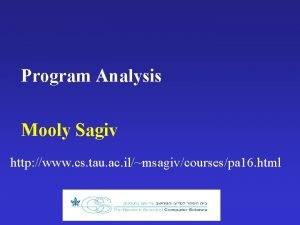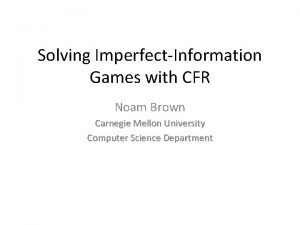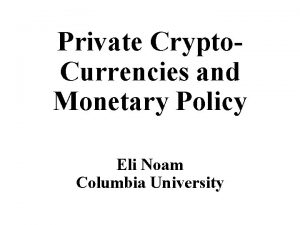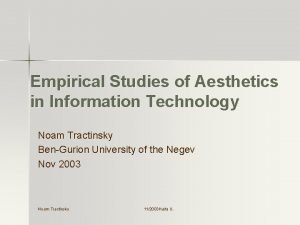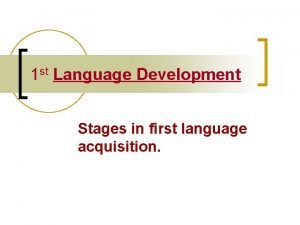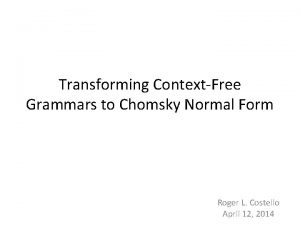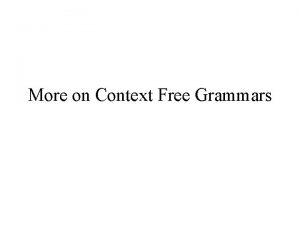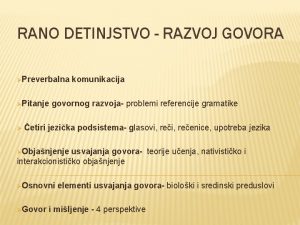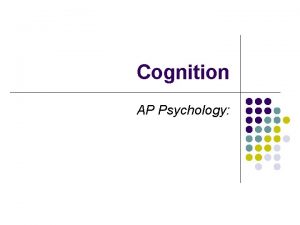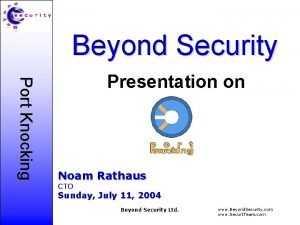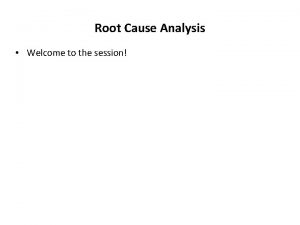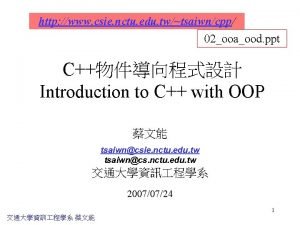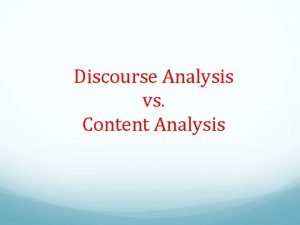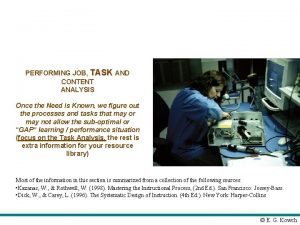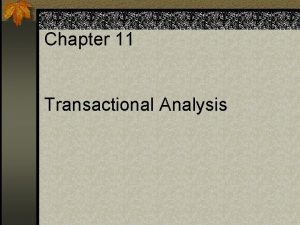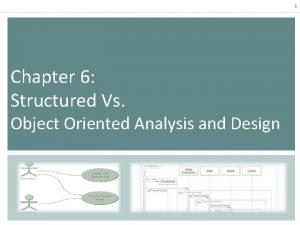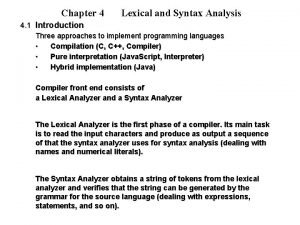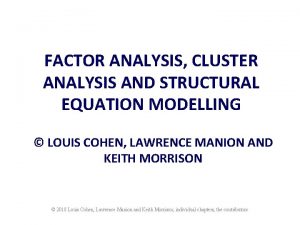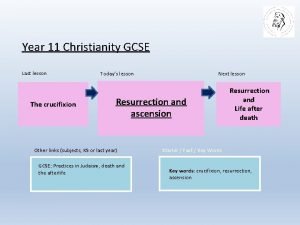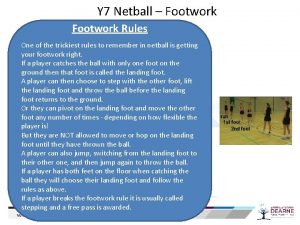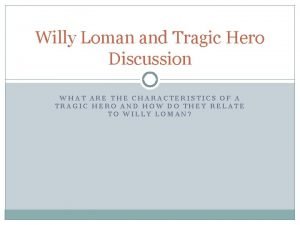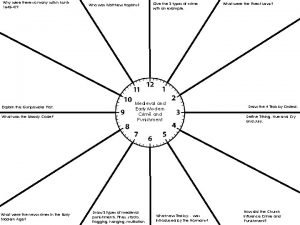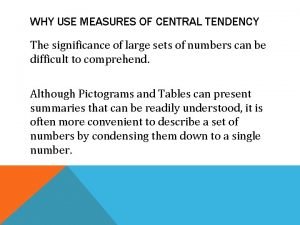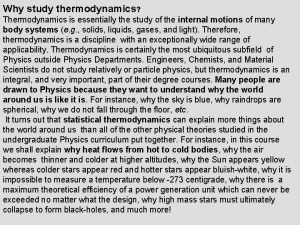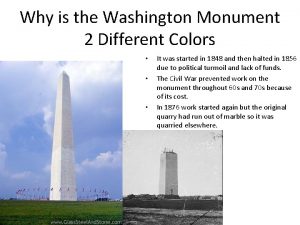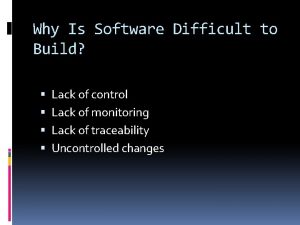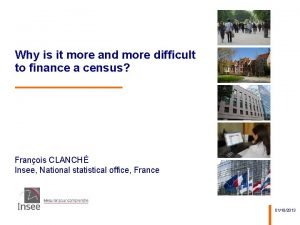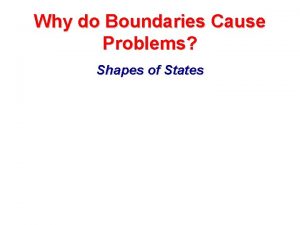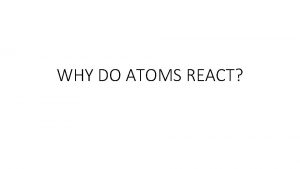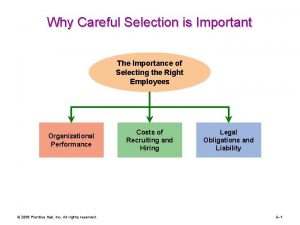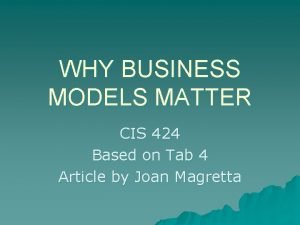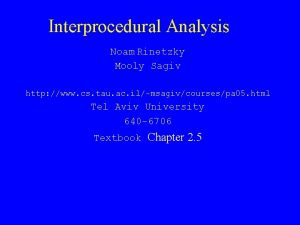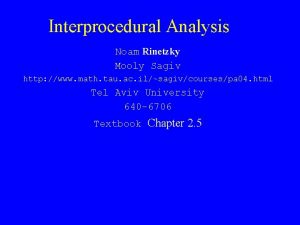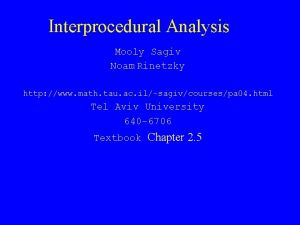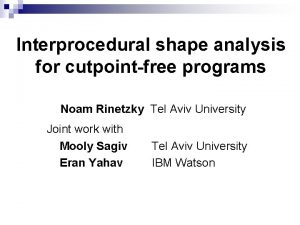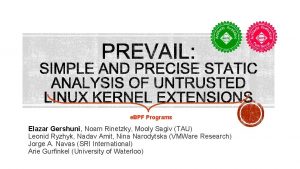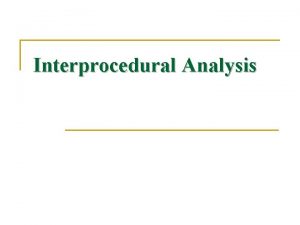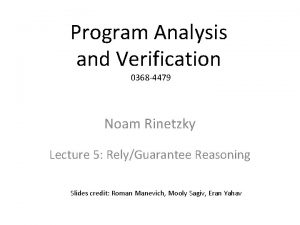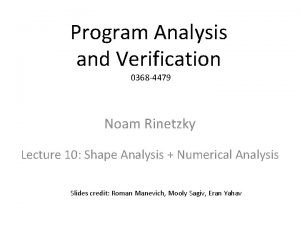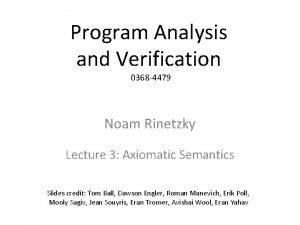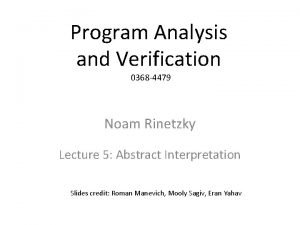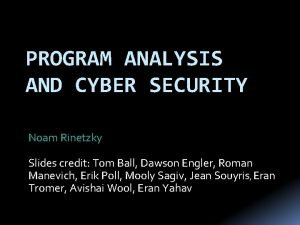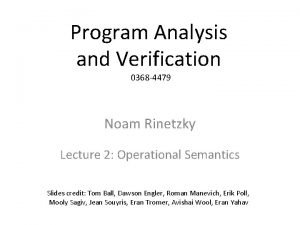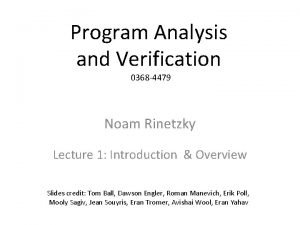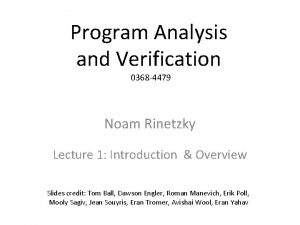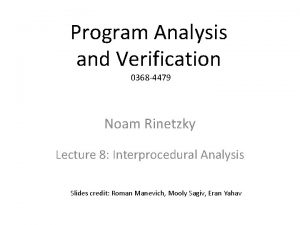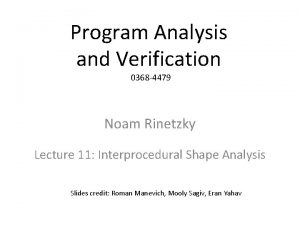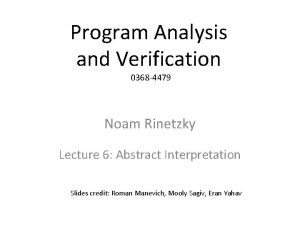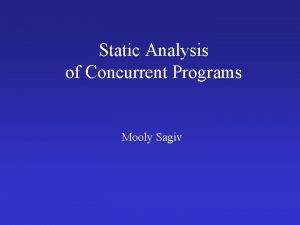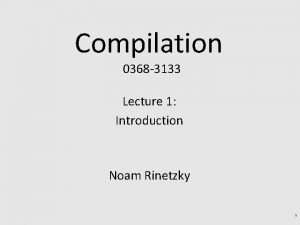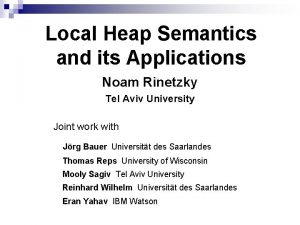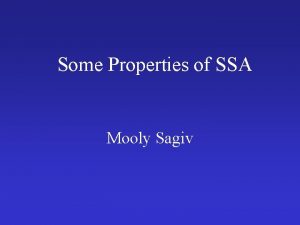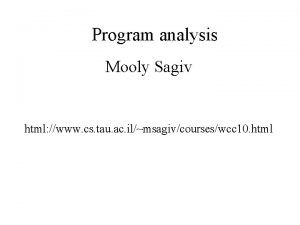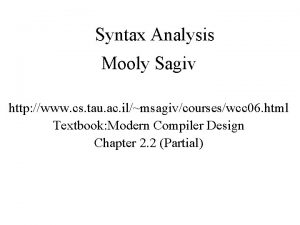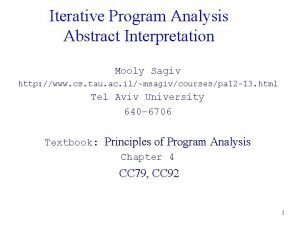Interprocedural Analysis Noam Rinetzky Mooly Sagiv Why do














![Simple Example void main() { int p(int a) { [a 7] int x ; Simple Example void main() { int p(int a) { [a 7] int x ;](https://slidetodoc.com/presentation_image_h/136700563f12eee6fe39fc98357f4a4f/image-15.jpg)
![Simple Example void main() { int p(int a) { [a 7] int x ; Simple Example void main() { int p(int a) { [a 7] int x ;](https://slidetodoc.com/presentation_image_h/136700563f12eee6fe39fc98357f4a4f/image-16.jpg)
![Simple Example void main() { int p(int a) { [a 7] int x ; Simple Example void main() { int p(int a) { [a 7] int x ;](https://slidetodoc.com/presentation_image_h/136700563f12eee6fe39fc98357f4a4f/image-17.jpg)
![Simple Example void main() { int p(int a) { [a 7] int x ; Simple Example void main() { int p(int a) { [a 7] int x ;](https://slidetodoc.com/presentation_image_h/136700563f12eee6fe39fc98357f4a4f/image-18.jpg)
![Simple Example void main() { int p(int a) { [a 7] [a 9] int Simple Example void main() { int p(int a) { [a 7] [a 9] int](https://slidetodoc.com/presentation_image_h/136700563f12eee6fe39fc98357f4a4f/image-19.jpg)
![Simple Example void main() { int p(int a) { [a ] int x ; Simple Example void main() { int p(int a) { [a ] int x ;](https://slidetodoc.com/presentation_image_h/136700563f12eee6fe39fc98357f4a4f/image-20.jpg)
![Simple Example void main() { int p(int a) { [a ] int x ; Simple Example void main() { int p(int a) { [a ] int x ;](https://slidetodoc.com/presentation_image_h/136700563f12eee6fe39fc98357f4a4f/image-21.jpg)
![Simple Example void main() { int p(int a) { [a ] int x ; Simple Example void main() { int p(int a) { [a ] int x ;](https://slidetodoc.com/presentation_image_h/136700563f12eee6fe39fc98357f4a4f/image-22.jpg)








![LFP approximates JOP • JOP[v] = {f [e 1, e 2, …, en](l) | LFP approximates JOP • JOP[v] = {f [e 1, e 2, …, en](l) |](https://slidetodoc.com/presentation_image_h/136700563f12eee6fe39fc98357f4a4f/image-31.jpg)









![Simple Example void main() { int p(int a) { c 1: [a 7] int Simple Example void main() { int p(int a) { c 1: [a 7] int](https://slidetodoc.com/presentation_image_h/136700563f12eee6fe39fc98357f4a4f/image-41.jpg)
![Simple Example void main() { int p(int a) { c 1: [a 7] int Simple Example void main() { int p(int a) { c 1: [a 7] int](https://slidetodoc.com/presentation_image_h/136700563f12eee6fe39fc98357f4a4f/image-42.jpg)
![Simple Example void main() { int p(int a) { c 1: [a 7] int Simple Example void main() { int p(int a) { c 1: [a 7] int](https://slidetodoc.com/presentation_image_h/136700563f12eee6fe39fc98357f4a4f/image-43.jpg)
![Simple Example void main() { int p(int a) { c 1: [a 7] int Simple Example void main() { int p(int a) { c 1: [a 7] int](https://slidetodoc.com/presentation_image_h/136700563f12eee6fe39fc98357f4a4f/image-44.jpg)
![Simple Example void main() { int p(int a) { c 1: [a 7] c Simple Example void main() { int p(int a) { c 1: [a 7] c](https://slidetodoc.com/presentation_image_h/136700563f12eee6fe39fc98357f4a4f/image-45.jpg)
![Simple Example void main() { int p(int a) { c 1: [a 7] c Simple Example void main() { int p(int a) { c 1: [a 7] c](https://slidetodoc.com/presentation_image_h/136700563f12eee6fe39fc98357f4a4f/image-46.jpg)
![Simple Example void main() { int p(int a) { c 1: [a 7] c Simple Example void main() { int p(int a) { c 1: [a 7] c](https://slidetodoc.com/presentation_image_h/136700563f12eee6fe39fc98357f4a4f/image-47.jpg)

![Another Example (|cs|=2) void main() { int p(int a) { c 1: [a 7] Another Example (|cs|=2) void main() { int p(int a) { c 1: [a 7]](https://slidetodoc.com/presentation_image_h/136700563f12eee6fe39fc98357f4a4f/image-49.jpg)
![Another Example (|cs|=1) void main() { int p(int a) { c 1: [a 7] Another Example (|cs|=1) void main() { int p(int a) { c 1: [a 7]](https://slidetodoc.com/presentation_image_h/136700563f12eee6fe39fc98357f4a4f/image-50.jpg)





![Phase 2 void main() { p(7); [x -9] } int p(int a) { [a Phase 2 void main() { p(7); [x -9] } int p(int a) { [a](https://slidetodoc.com/presentation_image_h/136700563f12eee6fe39fc98357f4a4f/image-56.jpg)



![CFL-Graph reachability [RHS’ 95] • Static analysis of programs with proecedures • Special cases CFL-Graph reachability [RHS’ 95] • Static analysis of programs with proecedures • Special cases](https://slidetodoc.com/presentation_image_h/136700563f12eee6fe39fc98357f4a4f/image-60.jpg)

























- Slides: 85

Interprocedural Analysis Noam Rinetzky Mooly Sagiv

Why do runtime errors occur? • • • Logical errors Incorrect initializations Resource limitations Aliasing problems API mismatch 2

Procedural program void main() { int p(int a) { int x; x = p(7); x = p(9); } return a + 1; }

Effect of procedures foo() bar() call bar() The effect of calling a procedure is the effect of executing its body

Interprocedural Analysis foo() bar() call bar() goal: compute the abstract effect of calling a procedure

Reduction to intraprocedural analysis • Procedure inlining • Naive solution: call-as-goto

Reminder: Constant Propagation Variable not a constant - … -1 0 Z 1 … No information

Reminder: Constant Propagation • L = (Var Z , ) • 1 2 iff x: 1(x) ’ 2(x) – ’ ordering in the Z lattice • Examples: – [x , y 42, z ] [x , y 42, z 73] – [x , y 42, z 73] [x , y 42, z ]

Reminder: Constant Propagation • Conservative Solution – Every detected constant is indeed constant • But may fail to identify some constants – Every potential impact is identified • Superfluous impacts

Procedure Inlining void main() { int p(int a) { int x; x = p(7); x = p(9); } return a + 1; }

Procedure Inlining void main() { int p(int a) { int x; return a + 1; x = p(7); } x = p(9); } void main() { int a, x, ret; [a ⊥, x ⊥, ret ⊥] a = 7; ret = a+1; x = ret; [a 7, x 8, ret 8] a = 9; ret = a+1; x = ret; [a 9, x 10, ret 10] }

Procedure Inlining • Pros – Simple • Cons – Does not handle recursion – Exponential blow up – Reanalyzing the body of procedures p 1 { } p 2 { call p 2 call p 3 … … call p 2 call p 3 } p 3{ }

A Naive Interprocedural solution • Treat procedure calls as gotos

Simple Example void main() { int x ; x = p(7); x = p(9) ; } int p(int a) { return a + 1; }
![Simple Example void main int pint a a 7 int x Simple Example void main() { int p(int a) { [a 7] int x ;](https://slidetodoc.com/presentation_image_h/136700563f12eee6fe39fc98357f4a4f/image-15.jpg)
Simple Example void main() { int p(int a) { [a 7] int x ; return a + 1; x = p(7); x = p(9) ; } }
![Simple Example void main int pint a a 7 int x Simple Example void main() { int p(int a) { [a 7] int x ;](https://slidetodoc.com/presentation_image_h/136700563f12eee6fe39fc98357f4a4f/image-16.jpg)
Simple Example void main() { int p(int a) { [a 7] int x ; return a + 1; x = p(7); [a 7, $$ 8] x = p(9) ; } }
![Simple Example void main int pint a a 7 int x Simple Example void main() { int p(int a) { [a 7] int x ;](https://slidetodoc.com/presentation_image_h/136700563f12eee6fe39fc98357f4a4f/image-17.jpg)
Simple Example void main() { int p(int a) { [a 7] int x ; return a + 1; x = p(7); [a 7, $$ 8] [x 8] x = p(9) ; [x 8] } }
![Simple Example void main int pint a a 7 int x Simple Example void main() { int p(int a) { [a 7] int x ;](https://slidetodoc.com/presentation_image_h/136700563f12eee6fe39fc98357f4a4f/image-18.jpg)
Simple Example void main() { int p(int a) { [a 7] int x ; return a + 1; x = p(7); [a 7, $$ 8] [x 8] x = p(9) ; [x 8] } }
![Simple Example void main int pint a a 7 a 9 int Simple Example void main() { int p(int a) { [a 7] [a 9] int](https://slidetodoc.com/presentation_image_h/136700563f12eee6fe39fc98357f4a4f/image-19.jpg)
Simple Example void main() { int p(int a) { [a 7] [a 9] int x ; return a + 1; x = p(7); [a 7, $$ 8] [x 8] x = p(9) ; [x 8] } }
![Simple Example void main int pint a a int x Simple Example void main() { int p(int a) { [a ] int x ;](https://slidetodoc.com/presentation_image_h/136700563f12eee6fe39fc98357f4a4f/image-20.jpg)
Simple Example void main() { int p(int a) { [a ] int x ; return a + 1; x = p(7); [a 7, $$ 8] [x 8] x = p(9) ; [x 8] } }
![Simple Example void main int pint a a int x Simple Example void main() { int p(int a) { [a ] int x ;](https://slidetodoc.com/presentation_image_h/136700563f12eee6fe39fc98357f4a4f/image-21.jpg)
Simple Example void main() { int p(int a) { [a ] int x ; return a + 1; x = p(7); [a , $$ ] [x 8] x = p(9); [x 8] } }
![Simple Example void main int pint a a int x Simple Example void main() { int p(int a) { [a ] int x ;](https://slidetodoc.com/presentation_image_h/136700563f12eee6fe39fc98357f4a4f/image-22.jpg)
Simple Example void main() { int p(int a) { [a ] int x ; return a + 1; x = p(7) ; [a , $$ ] [x ] x = p(9) ; [x ] } }

A Naive Interprocedural solution • Treat procedure calls as gotos • Pros: – Simple – Usually fast • Cons: – Abstract call/return correlations – Obtain a conservative solution

Analysis by reduction Procedure inlining Call-as-goto void main() { int p(int a) { void main() { int x ; [a ] int a, x, ret; x = p(7) ; return a + 1; [a ⊥, x ⊥, ret ⊥] [x ] [a , $$ ] a = 7; ret = a+1; x = ret; x = p(9) ; [a 7, x 8, ret 8] } [x ] a = 9; ret = a+1; x = ret; } [a 9, x 10, ret 10] } why was the naive solution less precise?

Stack regime ca P() { ca ll ll R(); rn } re rn tu re } … … R(); … R(){ tu … R P Q() { … }

Guiding light • Exploit stack regime Precision Efficiency

Simplifying Assumptions - Parameter passed by value - No procedure nesting - No concurrency ü Recursion is supported

Topics Covered ✓Procedure Inlining ✓The naive approach • Valid paths • The callstring approach • The Functional Approach • IFDS: Interprocedural Analysis via Graph Reachability • IDE: Beyond graph reachability • The trivial modular approach

Join-Over-All-Paths (JOP) • Let paths(v) denote the potentially infinite set paths from start to v (written as sequences of edges) • For a sequence of edges [e 1, e 2, …, en] define f [e 1, e 2, …, en]: L L by composing the effects of basic blocks f [e 1, e 2, …, en](l) = f(en) (… (f(e 2) (f(e 1) (l)) …) • JOP[v] = {f [e 1, e 2, …, en](l) | [e 1, e 2, …, en] paths(v)}

Join-Over-All-Paths (JOP) e 1 e 9 e 2 e 3 e 4 9 e 5 e 6 e 7 e 8 Paths transformers: f[e 1, e 2, e 3, e 4] f[e 1, e 2, e 7, e 8] f[e 5, e 6, e 3, e 4] f[e 1, e 2, e 3, e 4, e 9, e 1, e 2, e 3, e 4] f[e 1, e 2, e 7, e 8, e 9, e 1, e 2, e 3, e 4, e 9, …] … JOP: f[e 1, e 2, e 3, e 4](initial) f[e 1, e 2, e 7, e 8](initial) f[e 5, e 6, e 3, e 4](initial) … Number of program paths is unbounded due to loops
![LFP approximates JOP JOPv f e 1 e 2 enl LFP approximates JOP • JOP[v] = {f [e 1, e 2, …, en](l) |](https://slidetodoc.com/presentation_image_h/136700563f12eee6fe39fc98357f4a4f/image-31.jpg)
LFP approximates JOP • JOP[v] = {f [e 1, e 2, …, en](l) | [e 1, e 2, …, en] paths(v)} • LFP[v] = {f [e](LFP[v’]) | e =(v’, v)} LFP[v 0] = • JOP LFP - for a monotone function – f(x y) f(x) f(y) • JOP = LFP - for a distributive function – f(x y) = f(x) f(y) JOP may not be precise enough for interprocedural analysis!

Interprocedural analysis P R s. P Call node f 1 n 1 f 1 n 5 f 5 e. P Supergraph fx 2 r fc 2 e f 1 Call Q Return node s. R fc 2 e n 4 Entry node n 7 n 3 e. R f 1 Call node Call Q f 3 s. Q n 6 n 2 f 2 Q fx 2 r Exit node f 6 e. Q Return node

Paths s f 1 • paths(n) the set of paths from s to n – ( (s, n 1), (n 1, n 3), (n 3, n 1) ) n 1 f 1 n 2 f 3 n 3 f 3 e

Interprocedural Valid Paths f 2 callq f 1 f 3 ( enterq f 4 ret fk-1 ) fk fk-2 exitq fk-3 f 5 • IVP: all paths with matching calls and returns – And prefixes

Interprocedural Valid Paths • IVP set of paths – Start at program entry • Only considers matching calls and returns – aka, valid • Can be defined via context free grammar – matched : : = matched (i matched )i | ε – valid : : = valid (i matched | matched • paths can be defined by a regular expression

Join Over All Paths (JOP) i n start �fk o. . . o f 1� L L • JOP[v] = {[[e 1, e 2, …, en]](ι ) | (e 1, …, en) paths(v)} • JOP LFP – Sometimes JOP = LFP • precise up to “symbolic execution” • Distributive problem

The Join-Over-Valid-Paths (JVP) • vpaths(n) all valid paths from program start to n • JVP[n] = {[[e 1, e 2, …, e]](l) (e 1, e 2, …, e) vpaths(n)} • JVP JFP – In some cases the JVP can be computed – (Distributive problem)

The Call-String Approach • The data flow value is associated with sequences of calls (call string) • Use Chaotic iterations over the supergraph

Supergraph P R s. P Call node f 1 n 1 f 1 n 5 f 5 e. P fx 2 r fc 2 e f 1 Call Q Return node s. R fc 2 e n 4 Entry node n 7 n 3 e. R f 1 Call node Call Q f 3 s. Q n 6 n 2 f 2 Q fx 2 r Exit node f 6 e. Q Return node

Simple Example void main() { int p(int a) { int x ; return a + 1; c 1: x = p(7); c 2: x = p(9) ; } }
![Simple Example void main int pint a c 1 a 7 int Simple Example void main() { int p(int a) { c 1: [a 7] int](https://slidetodoc.com/presentation_image_h/136700563f12eee6fe39fc98357f4a4f/image-41.jpg)
Simple Example void main() { int p(int a) { c 1: [a 7] int x ; return a + 1; c 1: x = p(7); c 2: x = p(9) ; } }
![Simple Example void main int pint a c 1 a 7 int Simple Example void main() { int p(int a) { c 1: [a 7] int](https://slidetodoc.com/presentation_image_h/136700563f12eee6fe39fc98357f4a4f/image-42.jpg)
Simple Example void main() { int p(int a) { c 1: [a 7] int x ; return a + 1; c 1: x = p(7); c 1: [a 7, $$ 8] c 2: x = p(9) ; } }
![Simple Example void main int pint a c 1 a 7 int Simple Example void main() { int p(int a) { c 1: [a 7] int](https://slidetodoc.com/presentation_image_h/136700563f12eee6fe39fc98357f4a4f/image-43.jpg)
Simple Example void main() { int p(int a) { c 1: [a 7] int x ; return a + 1; c 1: x = p(7); c 1: [a 7, $$ 8] : x 8 c 2: x = p(9) ; } }
![Simple Example void main int pint a c 1 a 7 int Simple Example void main() { int p(int a) { c 1: [a 7] int](https://slidetodoc.com/presentation_image_h/136700563f12eee6fe39fc98357f4a4f/image-44.jpg)
Simple Example void main() { int p(int a) { c 1: [a 7] int x ; return a + 1; c 1: x = p(7); c 1: [a 7, $$ 8] : [x 8] c 2: x = p(9) ; } }
![Simple Example void main int pint a c 1 a 7 c Simple Example void main() { int p(int a) { c 1: [a 7] c](https://slidetodoc.com/presentation_image_h/136700563f12eee6fe39fc98357f4a4f/image-45.jpg)
Simple Example void main() { int p(int a) { c 1: [a 7] c 2: [a 9] int x ; c 1: x = p(7); return a + 1; : [x 8] c 2: x = p(9) ; } c 1: [a 7, $$ 8] }
![Simple Example void main int pint a c 1 a 7 c Simple Example void main() { int p(int a) { c 1: [a 7] c](https://slidetodoc.com/presentation_image_h/136700563f12eee6fe39fc98357f4a4f/image-46.jpg)
Simple Example void main() { int p(int a) { c 1: [a 7] c 2: [a 9] int x ; c 1: x = p(7); return a + 1; : [x 8] c 1: [a 7, $$ 8] c 2: [a 9, $$ 10] c 2: x = p(9) ; } }
![Simple Example void main int pint a c 1 a 7 c Simple Example void main() { int p(int a) { c 1: [a 7] c](https://slidetodoc.com/presentation_image_h/136700563f12eee6fe39fc98357f4a4f/image-47.jpg)
Simple Example void main() { int p(int a) { c 1: [a 7] c 2: [a 9] int x ; c 1: x = p(7); return a + 1; : [x 8] c 1: [a 7, $$ 8] c 2: [a 9, $$ 10] c 2: x = p(9) ; : [x 10] } }

The Call-String Approach • The data flow value is associated with sequences of calls (call string) • Use Chaotic iterations over the supergraph • To guarantee termination limit the size of call string (typically 1 or 2) – Represents tails of calls • Abstract inline
![Another Example cs2 void main int pint a c 1 a 7 Another Example (|cs|=2) void main() { int p(int a) { c 1: [a 7]](https://slidetodoc.com/presentation_image_h/136700563f12eee6fe39fc98357f4a4f/image-49.jpg)
Another Example (|cs|=2) void main() { int p(int a) { c 1: [a 7] c 2: [a 9] int x ; c 1: x = p(7); c 2. c 3: [b 10] return 2 * b; c 1: [a 7, $$ 16] c 2: [a 9, $$ 20] c 2: x = p(9) ; } c 1. c 3: [b 8] return c 3: p 1(a + 1); : [x 16] : [x 20] int p 1(int b) { c 1. c 3: [b 8, $$ 16] c 2. c 3: [b 10, $$ 20] } }
![Another Example cs1 void main int pint a c 1 a 7 Another Example (|cs|=1) void main() { int p(int a) { c 1: [a 7]](https://slidetodoc.com/presentation_image_h/136700563f12eee6fe39fc98357f4a4f/image-50.jpg)
Another Example (|cs|=1) void main() { int p(int a) { c 1: [a 7] c 2: [a 9] int x ; c 1: x = p(7); return 2 * b; c 1: [a 7, $$ ] c 2: [a 9, $$ ] c 2: x = p(9) ; } (c 1|c 2)c 3: [b ] return c 3: p 1(a + 1); : [x ] int p 1(int b) { } (c 1|c 2)c 3: [b , $$ ] }

Handling Recursion void main() { int p(int a) { c 1: p(7); c 1: [a 7] : [x ] if (…) { } c 1. c 2+: [a ] c 1: [a 7] c 1. c 2+: [a ] a = a -1 ; c 1: [a 6] c 1. c 2+: [a ] c 2: p (a); c 1. c 2*: [a ] a = a + 1; c 1. c 2*: [a ] } c 1. c 2*: [a ] x = -2*a + 5; c 1. c 2*: [a , x ] }

Summary Call-String • Easy to implement • Efficient for very small call strings • Limited precision – Often loses precision for recursive programs – For finite domains can be precise even with recursion (with a bounded callstring) • Order of calls can be abstracted • Related method: procedure cloning

The Functional Approach • The meaning of a procedure is mapping from states into states • The abstract meaning of a procedure is function from an abstract state to abstract states • Relation between input and output • In certain cases can compute JVP

The Functional Approach • Two phase algorithm – Compute the dataflow solution at the exit of a procedure as a function of the initial values at the procedure entry (functional values) – Compute the dataflow values at every point using the functional values

Phase 1 void main() { p(7); } p(a 0, x 0) = [a a 0, x -2 a 0 + 5] int p(int a) { [a a 0, x x 0] if (…) { [a a 0, x x 0] a = a -1 ; [a a 0 -1, x x 0] p (a); [a a 0 -1, x 2 a 0+7] a = a + 1; [a a 0, x 2 a 0+7] } [a a 0, x x 0] ] x = -2*a + 5; [a a 0, x 2*a 0+5] }
![Phase 2 void main p7 x 9 int pint a a Phase 2 void main() { p(7); [x -9] } int p(int a) { [a](https://slidetodoc.com/presentation_image_h/136700563f12eee6fe39fc98357f4a4f/image-56.jpg)
Phase 2 void main() { p(7); [x -9] } int p(int a) { [a 7, x 0] if (…) { [a 7, x 0] a = a -1 ; [a 6, xx [a 0] 0] p (a); [a , x 0] [a 6, x -7] [a , x ] a = a + 1; [a 7, x -7] [a , x ] } [a 7, x [a , x ] 0] x = -2*a + 5; [a 7, x [a , x ] 9] p(a 0, x 0) = [a a 0, x -2 a 0 + 5] }

Tabulation for finite lattices L • Data facts: d L L • Initialization: – fstart, start= ( , ) ; otherwise ( , ) – S[start, ] = • Propagation of (x, y) over edge e = (n, n’) - - Maintain summary: S[n’, x] = S[n’, x] n, n’ (y)) - n intra-node: n’: (x, n, n’ (y)) - n call-node: n’: (y, y) if S[n’, y] = and n’= entry node n’: (x, z) if S[exit(call(n), y] = z and n’= ret-site-of n n return-node: n’: (u, y) ; nc = call-site-of n’, S[nc, u]=x

Issues in Functional Approach • How to guarantee that finite height for functional lattice? – It may happen that L has finite height and yet the lattice of monotonic function from L to L do not • Efficiently represent functions – Functional join – Functional composition – Testing equality

Summary Functional approach • • Computes procedure abstraction Sharing between different contexts Rather precise Recursive procedures may be more precise/efficient than loops • But requires more from the implementation – Representing (input/output) relations – Composing relations
![CFLGraph reachability RHS 95 Static analysis of programs with proecedures Special cases CFL-Graph reachability [RHS’ 95] • Static analysis of programs with proecedures • Special cases](https://slidetodoc.com/presentation_image_h/136700563f12eee6fe39fc98357f4a4f/image-60.jpg)
CFL-Graph reachability [RHS’ 95] • Static analysis of programs with proecedures • Special cases of functional analysis • Reduce the interprocedural analysis problem to finding context free reachability [RHS’ 95] Thomas W. Reps, Susan Horwitz, Shmuel Sagiv: Precise Interprocedural Dataflow Analysis via Graph Reachability. POPL 1995

The Context-Free Reachability Problem • • • A finite directed graph G(s, V, E) A finite alphabet A labeling function l: E A context-free grammar C over A property holds at n N if there exists a path from s to n whose labels are in C 63

x y start main ( start p(a, b) if. x=3 p(x, y) a b . . Might by be uninitialized here? b=a p(a, b) return from p printf(y) printf(b) NO! YES! exit main ) exit p ]

Questions • When can we reduce a static analysis problem to CFL reachability • What is the complexity of solving CFL reachability problems • Interesting generalizations of CFL reachability

IFDS Problems • Finite subset distributive – – Lattice L = (D) is is Transfer functions are distributive • Efficient solution through formulation as CFL reachability • Can be generalized to certain infinite lattices

Possibly Uninitialized Variables {} Start {w, x, y} {w, y} x=3 if. . . {w, y} y=x {w, y} y=w {w} w=8 {} printf(y) {w, y}

Efficiently Representing Functions • Let f: 2 D 2 D be a distributive function • Then: – f(X) = { f({z}) | z X } – f(X) = f( ) { f({z}) | z X }

Encoding Transfer Functions • Enumerate all input space and output space • Represent functions as graphs with 2(D+1) nodes • Special symbol “ 0” denotes empty sets (sometimes denoted ) • Example: D = { a, b, c } f(S) = (S – {a}) U {b} 0 a b c

Representing Dataflow Functions Identity Function Constant Function a b c

Representing Dataflow Functions “Gen/Kill” Function Non-“Gen/Kill” Function a b c

Composing Dataflow Functions a b c

x y start main x=3 start p(a, b) if. a b . . b=a p(x, y) p(a, b) return from p printf(y) exit main printf(b) exit p

x y start main ( start p(a, b) if. x=3 p(x, y) a b . . Might by be uninitialized here? b=a p(a, b) return from p printf(y) printf(b) NO! YES! exit main ) exit p ]

The Tabulation Algorithm • Worklist algorithm, start from entry of “main” • Keep track of – Path edges: matched paren paths from procedure entry – Summary edges: matched paren call-return paths • At each instruction – Propagate facts using transfer functions; extend path edges • At each call – Propagate to procedure entry, start with an empty path – If a summary for that entry exits, use it • At each exit – Store paths from corresponding call points as summary paths – When a new summary is added, propagate to the return node

Asymptotic Running Time • CFL-reachability – Exploded control-flow graph: ND nodes – Running time: O(N 3 D 3) • Exploded control-flow graph Special structure Running time: O(ED 3) Typically: E N, hence O(ED 3) O(ND 3) “Gen/kill” problems: O(ED)

Some Applications Mayur Naik: Jchord a static analysis for Java IBM Watson: Wala static analysis tool Thomas Ball, Vladimir Levin, Sriram K. Rajaman A decade of software model checking with SLAM. CACM’ 11 Manu Sridharan, Rastislav Bodík: Refinement-based contextsensitive points-to analysis for Java. PLDI 2006 Nomair A. Naeem, Ondrej Lhoták, Jonathan Rodriguez: Practical Extensions to the IFDS Algorithm. CC 2010: 124 -144 Osbert Bastani, Saswat Anand, Alex Aiken: Specification Inference Using Context-Free Language Reachability, POPL’ 15 K Chatterjee, A Pavlogiannis, Y Velner: Quantitative interprocedural analysis, POPL’ 15 S Yang, D Yan, H Wu, Y Wang: Static control-flow analysis of userdriven callbacks in Android applications

Asymptotic Running Time • CFL-reachability – Exploded control-flow graph: ND nodes – Running time: O(N 3 D 3) • Exploded control-flow graph Special structure Running time: O(ED 3) Typically: E N, hence O(ED 3) O(ND 3) “Gen/kill” problems: O(ED)

IDE • Goes beyond IFDS problems – Can handle unbounded domains • Requires special form of the domain • Can be much more efficient than IFDS

Example Linear Constant Propagation • Consider the constant propagation lattice • The value of every variable y at the program exit can be represented by: y = {(axx + bx )| x Var* } c ax , c Z ∪{ , } bx Z • Supports efficient composition and “functional” join – [z : = a * y + b] – What about [z: =x+y]?

IDE Analysis • Point-wise representation closed under composition • CFL-Reachability on the exploded graph • Two phase algorithm – Compose functions – Compute dataflow values

Linear constant propagation Point-wise representation of environment transformers



Costs • O(ED 3) • Class of value transformers F L L – id F – Finite height • Representation scheme with (efficient) • • • Application Composition Join Equality Storage

Conclusion • Handling functions is crucial for abstract interpretation • Virtual functions and exceptions complicate things • But scalability is an issue – Small call strings – Small functional domains – Demand analysis

Bibliography • Textbook 2. 5 • Patrick Cousot & Radhia Cousot. Static determination of dynamic properties of recursive procedures In IFIP Conference on Formal Description of Programming Concepts, 1978 • Two Approaches to interprocedural analysis by Micha Sharir and Amir Pnueli: 1 • IDFS Interprocedural Distributive Finite Subset Precise interprocedural dataflow analysis via graph reachability. Reps, Horowitz, and Sagiv, POPL’ 95 • IDE Interprocedural Distributive Environment Precise interprocedural dataflow analysis with applications to constant propagation. Sagiv, Reps, Horowitz, and TCS’ 96
 Mooly sagiv
Mooly sagiv Hey bye bye
Hey bye bye Noam brown
Noam brown Noam chomsky cryptocurrency
Noam chomsky cryptocurrency Noam goldberg
Noam goldberg Noam goldberg
Noam goldberg Noam tractinsky
Noam tractinsky Chomsky stages
Chomsky stages Context free grammar to chomsky normal form
Context free grammar to chomsky normal form Chomsky normal form 설명
Chomsky normal form 설명 Columbia
Columbia Noam čomski
Noam čomski Embodied cognition ap psychology definition
Embodied cognition ap psychology definition Noam rathaus
Noam rathaus Don't ask why why why
Don't ask why why why Why-why analysis
Why-why analysis Contoh analisis akar masalah
Contoh analisis akar masalah Wh tongue twisters
Wh tongue twisters Does this table represent a function why or why not
Does this table represent a function why or why not What does a table represent
What does a table represent Why or why not
Why or why not Why be happy when you could be normal analysis
Why be happy when you could be normal analysis What is 5 why analysis example?
What is 5 why analysis example? Chapter 23 milady review questions
Chapter 23 milady review questions I want a wife satire
I want a wife satire Why is product analysis useful to a designer
Why is product analysis useful to a designer Elizabethan poetry examples
Elizabethan poetry examples 3x5 why analysis example
3x5 why analysis example Dfd advantages and disadvantages
Dfd advantages and disadvantages Cuckoo
Cuckoo Content analysis system
Content analysis system Differences between error analysis and contrastive analysis
Differences between error analysis and contrastive analysis Contrastive analysis error analysis and interlanguage
Contrastive analysis error analysis and interlanguage Fact finding methods in system analysis and design
Fact finding methods in system analysis and design Job content analysis
Job content analysis Child ego state
Child ego state Ooad vs oop
Ooad vs oop Lexical analysis and syntax analysis
Lexical analysis and syntax analysis Content analysis secondary data
Content analysis secondary data Technical feasibility example
Technical feasibility example Kmo test
Kmo test Na why are we here
Na why are we here Crucifixion quotes gcse
Crucifixion quotes gcse What is footwork in netball
What is footwork in netball Why did a stale- mate develop on the western front?
Why did a stale- mate develop on the western front? Why did a stale- mate develop on the western front?
Why did a stale- mate develop on the western front? Why is communication important in the workplace
Why is communication important in the workplace Why experience is important
Why experience is important Why does the wind blow
Why does the wind blow Willy loman as a tragic hero
Willy loman as a tragic hero Shakespeare bard of avon
Shakespeare bard of avon Why you shouldnt drink and drive
Why you shouldnt drink and drive Why were there so many witch hunts 1645-47
Why were there so many witch hunts 1645-47 Why is the median useful
Why is the median useful Pressure is state function or path function
Pressure is state function or path function Why study financial markets?
Why study financial markets? Department strategy
Department strategy Why should i feel discouraged
Why should i feel discouraged Why school should be shorter
Why school should be shorter Why mine data commercial viewpoint
Why mine data commercial viewpoint Why is water important to living things
Why is water important to living things Why is the monument 2 different colors
Why is the monument 2 different colors Why is software difficult to build
Why is software difficult to build Important of reading
Important of reading Meaning of physical diversity
Meaning of physical diversity Why is las vegas so hot
Why is las vegas so hot Beaumol
Beaumol Why the earth is called blue planet
Why the earth is called blue planet Why have there been no great women artist
Why have there been no great women artist Why did the industrial revolution start in britain
Why did the industrial revolution start in britain Why does ice stick to your skin
Why does ice stick to your skin Describe mayella's injuries
Describe mayella's injuries Why do we have seasons
Why do we have seasons Why do we experience seasons
Why do we experience seasons What are the 5 shapes of states
What are the 5 shapes of states Why do atoms react?
Why do atoms react? Why did william the conqueror win the battle of hastings
Why did william the conqueror win the battle of hastings Why did i choose this book
Why did i choose this book 3 reasons why the u.s. entered ww1
3 reasons why the u.s. entered ww1 Why did kaiser wilhelm abdicate
Why did kaiser wilhelm abdicate Why did orwell use animals instead of people
Why did orwell use animals instead of people Why did europeans begin to explore
Why did europeans begin to explore Why careful selection is important
Why careful selection is important Why do businesses exist
Why do businesses exist Why business models matter
Why business models matter Wnhen
Wnhen
